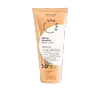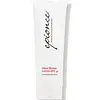What's inside
What's inside
 Key Ingredients
Key Ingredients

 Benefits
Benefits

 Concerns
Concerns

 Ingredients Side-by-side
Ingredients Side-by-side

Water
Skin ConditioningEthylhexyl Methoxycinnamate
UV AbsorberDiethylamino Hydroxybenzoyl Hexyl Benzoate
UV FilterEthylhexyl Salicylate
UV AbsorberGlycerin
HumectantBis-Ethylhexyloxyphenol Methoxyphenyl Triazine
Skin ConditioningEthylhexyl Triazone
UV AbsorberVp/Eicosene Copolymer
Titanium Dioxide
Cosmetic ColorantC12-15 Alkyl Benzoate
AntimicrobialPhenoxyethanol
PreservativeAmmonium Acryloyldimethyltaurate/Vp Copolymer
Dimethicone
EmollientCaprylyl Glycol
EmollientDecyl Glucoside
CleansingPEG-100 Stearate
Xanthan Gum
EmulsifyingSodium Benzoate
MaskingCitric Acid
BufferingPolyhydroxystearic Acid
EmulsifyingPotassium Sorbate
PreservativeEriophorum Spissum Flower/Stem Extract
Skin ConditioningStearic Acid
CleansingButylene Glycol
HumectantDisodium Phosphate
BufferingAlumina
AbrasiveRubus Chamaemorus Fruit Extract
AntioxidantSorbic Acid
PreservativeWater, Ethylhexyl Methoxycinnamate, Diethylamino Hydroxybenzoyl Hexyl Benzoate, Ethylhexyl Salicylate, Glycerin, Bis-Ethylhexyloxyphenol Methoxyphenyl Triazine, Ethylhexyl Triazone, Vp/Eicosene Copolymer, Titanium Dioxide, C12-15 Alkyl Benzoate, Phenoxyethanol, Ammonium Acryloyldimethyltaurate/Vp Copolymer, Dimethicone, Caprylyl Glycol, Decyl Glucoside, PEG-100 Stearate, Xanthan Gum, Sodium Benzoate, Citric Acid, Polyhydroxystearic Acid, Potassium Sorbate, Eriophorum Spissum Flower/Stem Extract, Stearic Acid, Butylene Glycol, Disodium Phosphate, Alumina, Rubus Chamaemorus Fruit Extract, Sorbic Acid
Homosalate 9.95%
Skin ConditioningEthylhexyl Salicylate 5%
UV AbsorberZinc Oxide 10.1%
Cosmetic ColorantC12-15 Alkyl Benzoate
AntimicrobialAmmonium Acryloyldimethyltaurate/Vp Copolymer
Butylene Glycol
HumectantCaprylyl Glycol
EmollientCaprylyl Trisiloxane
Skin ConditioningCetearyl Alcohol
EmollientDatem
EmollientDimethicone
EmollientEthylhexylglycerin
Skin ConditioningGlycerin
HumectantHexylene Glycol
EmulsifyingHydrogenated Polybutene
Hydroxyethyl Acrylate/Sodium Acryloyldimethyl Taurate Copolymer 1%
Emulsion StabilisingLinum Usitatissimum Seed Oil
PerfumingMalic Acid
BufferingLimnanthes Alba Seed Oil
Skin ConditioningPhenoxyethanol
PreservativePolyhydroxystearic Acid
EmulsifyingPolysorbate 80
EmulsifyingCarthamus Tinctorius Seed Oil
MaskingSteareth-2
EmulsifyingSteareth-21
CleansingTriethoxycaprylylsilane
Trimethylsiloxysilicate
EmollientWater
Skin ConditioningHomosalate 9.95%, Ethylhexyl Salicylate 5%, Zinc Oxide 10.1%, C12-15 Alkyl Benzoate, Ammonium Acryloyldimethyltaurate/Vp Copolymer, Butylene Glycol, Caprylyl Glycol, Caprylyl Trisiloxane, Cetearyl Alcohol, Datem, Dimethicone, Ethylhexylglycerin, Glycerin, Hexylene Glycol, Hydrogenated Polybutene, Hydroxyethyl Acrylate/Sodium Acryloyldimethyl Taurate Copolymer 1%, Linum Usitatissimum Seed Oil, Malic Acid, Limnanthes Alba Seed Oil, Phenoxyethanol, Polyhydroxystearic Acid, Polysorbate 80, Carthamus Tinctorius Seed Oil, Steareth-2, Steareth-21, Triethoxycaprylylsilane, Trimethylsiloxysilicate, Water
Ingredients Explained
These ingredients are found in both products.
Ingredients higher up in an ingredient list are typically present in a larger amount.
Ammonium Acryloyldimethyltaurate/Vp Copolymer (let's call it AAVC for short) is a synthetically created polymer. It's used as a film-forming agent and used to thicken the consistency of products.
AAVC is able to increase the consistency and viscosity of products due to its large molecule size. It also prevents ingredients from separating.
Butylene Glycol (or BG) is used within cosmetic products for a few different reasons:
Overall, Butylene Glycol is a safe and well-rounded ingredient that works well with other ingredients.
Though this ingredient works well with most skin types, some people with sensitive skin may experience a reaction such as allergic rashes, closed comedones, or itchiness.
Learn more about Butylene GlycolC12-15 Alkyl Benzoate is made up of Benzoic Acid and long chain alcohols. It has a low molecular weight.
C12-15 Alkyl Benzoate is an emollient and texture enhancer. Due to its solubility, it is often used in sunscreens to help evenly distribute active ingredients.
As an emollient, C12-15 Alkyl Benzoate helps soften and hydrate your skin. Emollients create a film on your skin that traps moisture within.
This ingredient has been reported to cause eye irritation.
Learn more about C12-15 Alkyl BenzoateCaprylyl Glycol is a humectant and emollient, meaning it attracts and preserves moisture.
It is a common ingredient in many products, especially those designed to hydrate skin. The primary benefits are retaining moisture, skin softening, and promoting a healthy skin barrier.
Though Caprylyl Glycol is an alcohol derived from fatty acids, it is not the kind that can dry out skin.
This ingredient is also used as a preservative to extend the life of products. It has slight antimicrobial properties.
Learn more about Caprylyl GlycolDimethicone is a type of synthetic silicone created from natural materials such as quartz.
What it does:
Dimethicone comes in different viscosities:
Depending on the viscosity, dimethicone has different properties.
Ingredients lists don't always show which type is used, so we recommend reaching out to the brand if you have questions about the viscosity.
This ingredient is unlikely to cause irritation because it does not get absorbed into skin. However, people with silicone allergies should be careful about using this ingredient.
Note: Dimethicone may contribute to pilling. This is because it is not oil or water soluble, so pilling may occur when layered with products. When mixed with heavy oils in a formula, the outcome is also quite greasy.
Learn more about DimethiconeEthylhexyl Salicylate is an organic compound used to block UV rays. It primarily absorbs UVB rays but offers a small amount of UVA protection as well.
Commonly found in sunscreens, Ethylhexyl Salicylate is created from salicylic acid and 2-ethylhexanol. You might know salicylic acid as the effective acne fighter ingredient and BHA.
The ethylhexanol in this ingredient is a fatty alcohol and helps hydrate your skin, similar to oils. It is an emollient, which means it traps moisture into the skin.
According to manufacturers, Ethylhexyl Salicylate absorbs UV wavelength of 295-315 nm, with a peak absorption at 307-310 nm. UVA rays are linked to long term skin damage, such as hyperpigmentation. UVB rays emit more energy and are capable of damaging our DNA. UVB rays cause sunburn.
Learn more about Ethylhexyl SalicylateGlycerin is already naturally found in your skin. It helps moisturize and protect your skin.
A study from 2016 found glycerin to be more effective as a humectant than AHAs and hyaluronic acid.
As a humectant, it helps the skin stay hydrated by pulling moisture to your skin. The low molecular weight of glycerin allows it to pull moisture into the deeper layers of your skin.
Hydrated skin improves your skin barrier; Your skin barrier helps protect against irritants and bacteria.
Glycerin has also been found to have antimicrobial and antiviral properties. Due to these properties, glycerin is often used in wound and burn treatments.
In cosmetics, glycerin is usually derived from plants such as soybean or palm. However, it can also be sourced from animals, such as tallow or animal fat.
This ingredient is organic, colorless, odorless, and non-toxic.
Glycerin is the name for this ingredient in American English. British English uses Glycerol/Glycerine.
Learn more about GlycerinPhenoxyethanol is a preservative that has germicide, antimicrobial, and aromatic properties. Studies show that phenoxyethanol can prevent microbial growth. By itself, it has a scent that is similar to that of a rose.
It's often used in formulations along with Caprylyl Glycol to preserve the shelf life of products.
Polyhydroxystearic Acid is a soft wax made from castor oil.
It is is a texture thickener, emulsifier, and film-former. Emulsifiers prevent ingredients from separating, such as oils and waters.
Polyhydroxystearic Acid may not be fungal acne safe.
Learn more about Polyhydroxystearic AcidWater. It's the most common cosmetic ingredient of all. You'll usually see it at the top of ingredient lists, meaning that it makes up the largest part of the product.
So why is it so popular? Water most often acts as a solvent - this means that it helps dissolve other ingredients into the formulation.
You'll also recognize water as that liquid we all need to stay alive. If you see this, drink a glass of water. Stay hydrated!
Learn more about Water